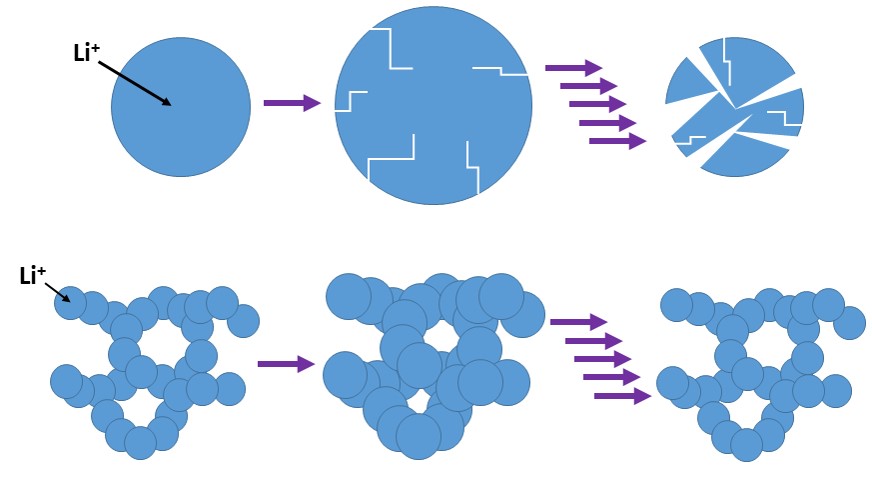Nanostructured Metals for Alloying Anodes

In bulk particles (top) lithiation fractures the particles whereas in porous particles (bottom) the mechanical stress is alleviated by the volume expanding within the pores and recontracting to the original structure.
One focus of our battery research is to develop materials that can be used as high capacity anodes. Capacity describes the amount of charge that can be stored per mass of material. These high capacity anodes can have more than 2x the capacity than commercial graphite and are useful in high energy applications like electric vehicles. The main issue for these materials is the large expansion associated with accommodating lithium, or sodium, which fracture the particles. We create hierarchical architectures with macropores, ~1 µm, and mesopores, ~50 nm where the macropores allow for electrolyte penetration, and the mesopores accommodate the volume expansion. Operando transmission X-ray microscopy (TXM) details how the morphology changes while cycling the material so that we can understand failure mechanisms and how the structure can be tuned to suppress them.
Useful References
(PDF)
(PDF)
(PDF)
(PDF)
